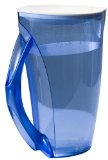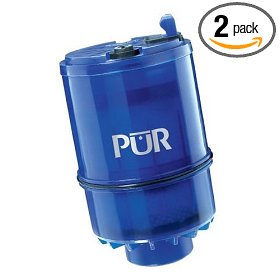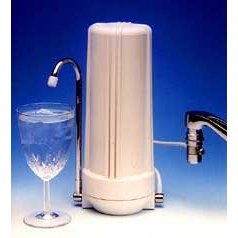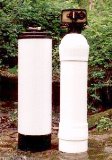Bottled Water vs. Tap Water
Tap water quality can vary from place to place, but if you treat or filter your own tap water, it will most likely end up being as good if not better than most bottled water and certainly one of the first places in this economy to save some money.
Also, drinking filtered water from home is much better for the environment and does not leave all of the plastic bottles to be discarded. If you like sipping from a bottle, get a permanent drinking bottle that can easily be washed.
Some issues with the bottled water industry is that they actually do not have to meet the same strict requirements as set out for the community water supply ie. "Tap Water". In the United States, the EPA actually mandates frequent testing of public water, much more so than the lightly regulated bottled water business.
A significant amount of water that goes into bottled water comes from the tap or public source anyway, and all some of them do is filter or ozonate the water. That does not necessarily remove all of the pollutants and in fact traces of medicines, caffeine and even metals are routinely found in tested bottled water.
The first step is to check your own tap water. The next step is to remove the impurities by filtration. The third step is to get a permanent water bottle that can be washed. Now you are on your way to helping the environment, getting better quality water and saving money vs. constantly buying bottled water.
- Where does my water come from anyway? Well most likely, your community gets the water from a lake, river or underground aquifer or water basin. (Fiji water actually comes from an aquifer which is an underground reservoir). You can ask your own water company for a report (sourcewater assessment), so you can see what all is in your local drinking water. This way you do not need your own measuring devices and their reports are fairly reliable.
Some sources of additional information are:
www.safe-drinking-water.org and www.epa.gov/safewater .
Free database is available at National Library of Medicine (www.nlm.nih.gov). From Health Canada, info on Minimizing Exposure to Lead in Drinking Water.
What kinds of bottled water are there:
Artesian Water - originates from a confined aquifer that has been
tapped and in which the water level stands at some height above the
top of the aquifer.
Fluoridated - contains fluoride added within guideline limitations.
Mineral Water - naturally contains at least 250 parts per million (ppm) total dissolved solids (tds). No minerals may be added to this water.
Purified Water - is produced by distillation, deionization, reverse osmosis, or other suitable processes. Bacteria and solids(tds) have been removed.
Spring Water - comes from an underground formation from which water flows naturally to the Earth's surface.
Well Water and Municipal Tap Water are non-bottled water sources although both of these types find their way into some bottled water types that then go to further purify these sources. This is exactly what can be done at home for less.
- Distillation. Is the process where water is turned into a vapor leaving the heavier minerals behind. Then the vapors are condensed into water again.
- Reverse osmosis. Water is forced through membranes to remove minerals in the water.
- Ozonation. Bottlers of all types of waters typically use ozone gas, an antimicrobial agent, to disinfect and purify water instead of old-school chlorine sanitization, since chlorine can leave a residual taste and smell to the water. Bottled water purified in this way may indicate ozone on the label.
Bottled water that has been treated by distillation, reverse osmosis, or other suitable process and that meets the definition of "purified water"
Be aware that most bottled water processing takes out the fluoridation of municipal water which was originally introduced into water supplies to assist in teeth protection especially for kids. Drinking only bottled water may deprive children from fluoride which can help prevent cavities, so this should be brought up with your doctor or dentist for any updated concerns about a purely bottled water drinking source.
- What are some of the pollutants to be concerned about in bottled water or tap water?
Lead is a toxic material that is known to be harmful to your health. Even small amounts are harmful, especially for children. Lead does not occur naturally in water, but comes into contact with drinking water through corrosion of lead-containing pipes (like typical copper plumbing with lead soldered joints). Also lead based paints, food and even household dust can contaminate drinking water. Lead from drinking water is one of the main ways this poison gets into our bodies. You can’t really taste it in the water, yet in moderate doses it could even produce light flu-like symptoms in the body. Always contact your doctor if you have questions about your health. Lead interferes with the body’s immune system and cause kidney disease, high blood pressure and other problems. For kids, this is the single most significant environmental health hazard. Even to the point of causing learning disabilities and aggressive behavior (although this is not an excuse for these behaviors, it is one source of possible cause to be concerned with and to realize it is important to safeguard the water you drink).
In the U.S., the EPA allows up to 15 ppb (parts per billion) of lead in the water supply to call it safe, but that does not mean that your home located downstream from the testing location will not have more as the water possibly travels through lead-infested piping to get to your tap. What can you do? Have the water tested to be sure your household water is safe. For the price of a few cases of bottled water, you can get a clean water test kit at home.
A WaterSafe kit identifies harmful levels of bacteria and lead in your water. Watersafe test kits are easy-to-use and produce results on the spot. Tests bring the accuracy of laboratory procedures into any home or business. Contains two one-step water testing kits: Lead kit can detect dissolved lead at levels below the EPA Action level of 15 parts per billion (ppb); bacteria kit can detect the presence of Coliform Bacteria in your water. Get results in only 10 minutes with easy to follow directions and no mixing or measuring: Watersafe Home Drinking Water Test, Lead, Bacteria - 1 ea
And while you are at testing your tap water, you can test your bottled water too in case you want to feel comfortable about continuing to drink your chosen brand. Note that boiling water does not reduce lead, this may actually increase the relative amount of lead in the water as the non-leaded steam evaporates, so only drink cold water, not heated water.
You can also flush out your pipes here and there by letting the water run for a minute or two (maybe wash something to not completely waste the water, but then get your drink only after running it a bit if the tap has not been used for 5 hours or more. If you are concerned about having been exposed to lead in your water, you can have your blood tested by your doctor. So to get a testing kit may bring some peace of mind.
What other contaminants in drinking water are of concern?
Arsenic, Chromium, Nitrate, Dichloromethane (from fumigating crops, strawberries, and grains- this can cause damage ot the nervous system and to the blood and even possibly cause liver damage and cancer- this can be removed from the water by a granular activated carbon filter or by reverse osmosis), Cryptosporidium (parasite that can cause diarrhea, nausea and fever), Total Coliform Bacteria (can cause fatigue, headaches and even serious illness), Cloudy drinking water can actually keep chlorine and other additives from doing their job, so again filtration is desired in that case.
- What about using water filtration devices? Some of these do indeed remove lead and may be useful in filtering out this undesirable contaminant.
Use water filters to get rid of contaminants or improve the taste of your water. There are many brands and models, but here are the basics:
- Buy good quality filters
- A carbon filter is a relatively inexpensive and common solution for many water contaminants, but check the label to make sure it's filtering lead among other selected pollutants if your water contains excessive lead. Not sure?, test the water with a Watersafe Home Drinking Water Test Kit for Lead and Bacteria
- Change your filters regularly so they remain effective. Home filtration systems can improve the taste and appearance of tap water at a very minimal cost. But as with anything else, consumers need to be careful about maintaining these filters to make sure they remain effective in use by following manufacturers directions and replacing filter elements as needed.
Water filter types
All filters are designed to be used with cold water only. |
||
Carafe |
||
Best for filtering small quantities of drinking water inexpensively without complicated installation. |
|
|
Faucet-mounted |
||
Best for filtering drinking and cooking water with minimal installation effort. Easy switch between unfiltered and filtered water. |
|
|
Countertop |
||
This type of water filter is best for for filtering larger quantities of water without plumbing changes. Does take some counterspace. |
|
|
Undersink |
||
Best for filtering lots of water without modifying the existing faucet or taking up counter space. |
|
|
Reverse-osmosis |
||
Best for purifying your water from a wide range of contaminants including dissolved solids and is certified to remove arsenic. This type of filter requires plumbing modification and regular maintenance. Takes up some cabinet space. |
|
|
Whole-house |
||
The granddaddy of them all (and one that requires professional installation) is ideal for removing sediment, rust, chlorine and other contaminants from household water. Conditions water and makes it softer as well. Whole house water filter, double tank. |
|
|
However you decide to assure clean drinking water for your home, the most important thing is to purify it using any of the above water filtration methods to help replace expensive and environmentally unfriendly bottled water with pure clean filtered drinking water for the whole family.






